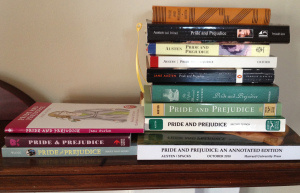Sarah Emsley's Blog, page 36
January 29, 2014
Mr. Darcy and L.M. Montgomery
Two of my blog posts have recently been reprinted on The Literary Ladies’ Guide to the Writing Life. One of them is “Why is Mr. Darcy So Attractive?” – which is the second most popular post ever on my blog. (Second only to “Jane Austen’s ‘Darling Child’ Meets the World,” which I mentioned in yesterday’s post. Yes, Pride and Prejudice gets a great deal of attention, and that attention is well deserved! But this year we’re also going to give Mansfield Park its share of attention, too – right? Right?? I hope you’re all with me on this!)
Here’s the beginning of my Mr. Darcy post:
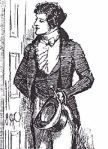 “Darcy is still the ultimate sex symbol” is the title of a recent article by Katy Brand in The Telegraph. The article features a photograph of Colin Firth and his famous wet shirt from the 1995 A&E/BBC Pride and Prejudice series. I can’t reproduce the image here, because I’ve promised to try very hard not to talk about the “white noise” of popular culture that surrounds Pride and Prejudice. … Read more at The Literary Ladies’ Guide to the Writing Life.
“Darcy is still the ultimate sex symbol” is the title of a recent article by Katy Brand in The Telegraph. The article features a photograph of Colin Firth and his famous wet shirt from the 1995 A&E/BBC Pride and Prejudice series. I can’t reproduce the image here, because I’ve promised to try very hard not to talk about the “white noise” of popular culture that surrounds Pride and Prejudice. … Read more at The Literary Ladies’ Guide to the Writing Life.
The second is “L.M. Montgomery’s Literary Pilgrimage to Concord, Mass.,” which I posted last fall on Montgomery’s birthday:
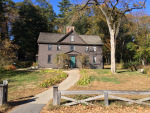 Given how many fans of L.M. Montgomery visit “Green Gables” in Cavendish, PEI each year, I find it fascinating to read about Montgomery’s own literary pilgrimage to Concord, Massachusetts, when she was visiting her publisher, L.C. Page, in Boston in November of 1910.
Given how many fans of L.M. Montgomery visit “Green Gables” in Cavendish, PEI each year, I find it fascinating to read about Montgomery’s own literary pilgrimage to Concord, Massachusetts, when she was visiting her publisher, L.C. Page, in Boston in November of 1910.
“Concord is the only place I saw when I was away where I would like to live,” she writes. “It is a most charming spot and I shall never forget the delightful drive we had around it.” … Read more at The Literary Ladies’ Guide to the Writing Life.
Many thanks to Nava Atlas for sharing these posts on her Literary Ladies blog.


January 28, 2014
201 Years of Pride and Prejudice
JASNA Nova Scotia members are meeting on Sunday, February 23rd in Halifax to discuss essays published in the most recent issue of Persuasions On-Line, which includes conference papers on Pride and Prejudice from the 2013 AGM in Minneapolis. The celebrations for Mansfield Park have begun, and the celebrations for Pride and Prejudice aren’t over yet!
Our plan is for each person to choose an essay to focus on. We’ll take turns giving a brief overview (maximum 5 minutes each) of the essays we’ve chosen, with discussion to follow. Sheila and Hugh Kindred are hosting the event. Please let them know if you’re able to attend, and which essay you’d like to talk about. (Or leave a comment here, and I’ll pass on the information to them, and directions to you, as needed.)
Today, January 28th, marks the 201st anniversary of the day Pride and Prejudice was published. Here’s what I wrote last year to celebrate the 200th anniversary, in my post “Jane Austen’s ‘Darling Child’ Meets the World”:
Jane Austen didn’t like the way her mother read Pride and Prejudice aloud. Mrs. Austen read too quickly, “—& tho’ she perfectly understands the Characters herself, she cannot speak as they ought” (Letters, 4 February 1813). Jane writes to her sister Cassandra that she’s grateful for Cassandra’s praise of the novel because she has been having “some fits of disgust” recently. She is at home in Chawton without Cassandra, keeping the secret of her authorship from her neighbours and enduring the irritation of listening to her mother’s interpretation of her characters. She can’t control what other people do with the language of her characters, and she can’t control the errors in the printing: “The greatest blunder in the Printing that I have met with is in page 220—Vol. 3. where two speeches are made into one.” She’s just written one of the greatest books in English literature, and she must know she’s accomplished something very important, but the fact that the book is now out in the world being judged and interpreted by others is making her restless.
Click here to read the rest of “Jane Austen’s ‘Darling Child’ Meets the World.” (This piece was, and still is, the most popular post on my blog.) And here’s the link to the series of blog posts I wrote after that one, about the experience of rereading Pride and Prejudice. Happy 201st anniversary to Austen’s darling child!


January 24, 2014
Edith Wharton’s Passion for Order
It was Helen Pinkerton who introduced me to Edith Wharton, and in honour of Wharton’s birthday today I’d like to share with you one of my favourite poems, Helen’s meditation “On Gari Melchers’s ‘Writing’ (1905) in the Los Angeles County Museum of Art,” which makes reference to Wharton and her passion for order in art and architecture.
The poem is part of a series called “Bright Fictions,” poems on works of art, and it appears in Helen’s 2002 collection Taken in Faith: Poems. It’s reproduced here by permission. I hope you’ll be inspired to read the other poems in the collection as well. You can see the Gari Melchers painting at the Los Angeles County Museum of Art website, and on my Edith Wharton board on Pinterest.
On Gari Melchers’s ‘Writing’ (1905) in the Los Angeles County Museum of Art
By Helen Pinkerton
The house was quiet and the world was calm. - Wallace Stevens
How often did she make such quiet, one wonders,
This woman writing at a covered table—
Full summer light warming the roseate hues,
Mauve, red, and pink of dress and cloth and room.
A Wedgwood pier glass shows three Roman figures
In ritual dance—cool neoclassic Graces—
Beside a clay pot of geraniums.
Her taste eclectic—like our modern lives—
Loving the past but settled in the living,
She seems meticulous—even, perhaps,
Like Edith Wharton, passionate for order,
Feeling, as she did, that in house and novel,
“Order, the beauty even of Beauty is.”
Stevens, though you sought order in the sea
And grander heavens, the threat of nothingness
Unmanned you. Most women have no time for such,
For fate constrains them to immediate means,
The quiet art of keeping calm the house.

Edith Wharton in 1905
I love the image of Wharton as the woman in the painting, writing in the quiet house, in the calm world, keeping life in order by writing. There’s a clear visual parallel between the Melchers painting and the 1905 publicity photo of Wharton at her desk at The Mount, taken in the year she published her best-selling novel The House of Mirth, which happens to be the same year as the Melchers painting. Yet while Wharton sometimes posed for photographs at her desk, the real work of her writing life happened as she wrote in bed each morning. I wonder what that would have looked like, either in a photograph or a painting.
Irene Goldman-Price describes the scene in her introduction to My Dear Governess: The Letters of Edith Wharton to Anna Bahlmann: “Most mornings Wharton would remain in bed with a light breakfast and a small dog or two beside her, writing, on blue stationery, long stories and short about the characters who inhabited her mind. Anna Bahlmann collected these pages—or was handed them by Wharton’s maid—and saw to it that they became manuscripts. Only glimpses of this work appear in Wharton’s letters.”
The curator’s notes for “Writing” say that Melchers’s wife Corinne often posed as his model, and that the painting is set in Holland, in Schuylenburg, the former home of the American painter George Hitchcock. I wonder what Mrs. Melchers is writing? Probably a letter; probably not a novel. The house is quiet and the world is calm. The summer light shines on the red geraniums, the red cloth-covered writing table, the woman’s white dress. Like Eleanor Tilney in Jane Austen’s Northanger Abbey, who “always wears white” (Chapter 12), this writing woman wears a colour that signals to the reader she can afford to wear a dress that’s unlikely to get dirty. She has money, comfort, a beautiful room, and the luxury of time to write on a summer afternoon. It’s likely that she has enough money to hire other women to help her keep her house calm. Does she have enough time to contemplate existential questions about the sea and the heavens? Maybe not. As Helen asks in the first line of her poem, “How often did she make such quiet”?
Patrick Kurp comments on the “revisionist reading of Stevens”—“the threat of nothingness / Unmanned you”—and says it makes him laugh: “There is an overdramatized quality to some of Stevens’ angst, all that ‘poetry is god’ business.” There’s no threat of nothingness in “Writing”: the scene is comfortable, even cosy, with its warm colours, its bright light, the cheerful geraniums in the clay pot. And yet, it’s impossible to know what the woman is writing. Just because the scene is beautiful doesn’t mean that the writing is calm or quiet. She could be, like Wharton, writing about the despair of Lily Bart in The House of Mirth, or the agony of Ralph Marvell in The Custom of the Country.
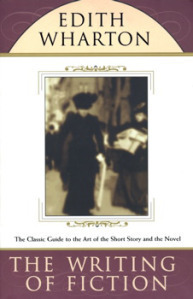 The line “Order the beauty even of beauty is” comes from “The Vision,” by the 17th century poet Thomas Traherne, and Wharton chose it as the epigraph to her book The Writing of Fiction (1924)—although for some reason, the epigraph is omitted from the 1997 Touchstone edition that I keep by my own writing desk. Wharton was intensely interested in the well-ordered, well-organized life. As Melanie Dawson writes in a chapter on “Biography” in Edith Wharton in Context (2012), edited by Laura Rattray, Wharton’s “passions for gardening, decorating, and traveling were formidable and served as outlets for her energies when she was not writing. As with her compositions, these projects demanded long-term commitments and a broad, comprehensive vision, or the exercise of what she described [in her autobiography, A Backward Glance] as her ‘irresistible tendency to improve and organize.’”
The line “Order the beauty even of beauty is” comes from “The Vision,” by the 17th century poet Thomas Traherne, and Wharton chose it as the epigraph to her book The Writing of Fiction (1924)—although for some reason, the epigraph is omitted from the 1997 Touchstone edition that I keep by my own writing desk. Wharton was intensely interested in the well-ordered, well-organized life. As Melanie Dawson writes in a chapter on “Biography” in Edith Wharton in Context (2012), edited by Laura Rattray, Wharton’s “passions for gardening, decorating, and traveling were formidable and served as outlets for her energies when she was not writing. As with her compositions, these projects demanded long-term commitments and a broad, comprehensive vision, or the exercise of what she described [in her autobiography, A Backward Glance] as her ‘irresistible tendency to improve and organize.’”
For further reading:
Edith Wharton in Context, ed. Laura Rattray (Cambridge: Cambridge University Press, 2012).
My Dear Governess: The Letters of Edith Wharton to Anna Bahlmann, edited by Irene Goldman-Price (New Haven, CT: Yale University Press, 2012).
Taken in Faith: Poems, by Helen Pinkerton (Athens, OH: Swallow Press, 2002).
Related posts:
On writing with “dogged obstinacy”: Edith Wharton’s 151st birthday, 2013
“Satisfied! What a beggary state! Who would be satisfied with being satisfied?” Edith Wharton’s 150th birthday, 2012
Helen Pinkerton introduced me to Edith Wharton and The Custom of the Country


January 22, 2014
“At Home with the Georgians” and JASNA Nova Scotia
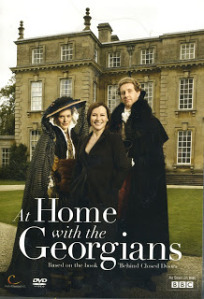 The next meeting of JASNA Nova Scotia is this Sunday, January 26th, and members are gathering to watch “At Home with the Georgians” (2010), presented by Amanda Vickery and based on her book Behind Closed Doors: At Home in Georgian England (Yale University Press, 2009).
The next meeting of JASNA Nova Scotia is this Sunday, January 26th, and members are gathering to watch “At Home with the Georgians” (2010), presented by Amanda Vickery and based on her book Behind Closed Doors: At Home in Georgian England (Yale University Press, 2009).
“Amanda Vickery is a naughty, clever, humourous eavesdropper on the past… She has the Georgians in her sights like no one since Jane Austen.” – Sunday Telegraph
The meeting is at 2pm in Halifax, and if you’re interested in attending, please let our Regional Coordinator, Anne Thompson, know, and she can give you details and directions. (Or you can leave a comment here.)
Reviews of “At Home with the Georgians” from The Guardian, The Telegraph, Austenonly, and Jane Austen’s World.


January 17, 2014
Mansfield Park is a Tragedy, Not a Comedy
I’m really excited about discussing Mansfield Park with all of you this year – so excited that I can’t wait until May 9th, when my series of guest posts on the novel launches, to start the conversation. I’m also far too impatient to begin at the beginning, so I’m writing today to tell you what I think of the ending. For anyone who hasn’t yet read Mansfield Park, here’s the obligatory spoiler alert. (Although I guess the title of this post already alluded to the ending….)
I think the key to understanding Mansfield Park is that it’s a tragedy, rather than a comedy. I mentioned a couple of weeks ago that not many people choose it as a favourite from among Austen’s novels. (Natasha Duquette, who’s writing a guest post on part of Chapter 27 – in which Fanny “had all the heroism of principle” – is an exception. Is there anyone else out there whose favourite Austen novel is Mansfield Park? I would love to hear from you! I’ve already confessed that Pride and Prejudice is my own favourite, although MP is a close second.) Many readers find the ending of Mansfield Park disappointing. I think that’s because most of us tend to approach Austen novels with the expectation that they will be romantic comedies. And most of them are. But not this one.
Reading Mansfield Park in light of Aristotle’s theory of tragedy in his Poetics shows that it’s a tragedy with a happy ending, or a “prosperous outcome.” I wrote about this idea in my essay “The Tragic Action of Mansfield Park” in Persuasions On-Line a few years ago.
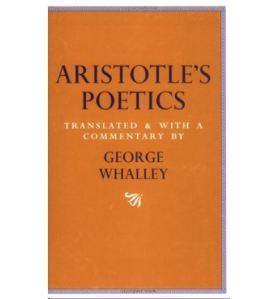
Aristotle’s Poetics, translated by George Whalley, edited by John Baxter and Patrick Atherton
The essay was based on a talk I gave at the 2006 JASNA AGM in Tucson, and over the last few years I revised it again, developing the argument further for publication in the MLA collection of essays Approaches to Teaching Austen’s Mansfield Park, edited by Marcia McClintock Folsom and John Wiltshire. That version of the essay will be published soon (the book is at the copyediting stage, so publication can’t be too far away – I hope!).
But for now, if you’re interested in my argument, you can read the earlier version in Persuasions On-Line. This version includes comparisons between Mansfield Park and Edith Wharton’s novel The House of Mirth, and I was quite attached to those comparisons (as you can imagine, because I love talking about Austen and Wharton). I expanded the rest of the essay for the MLA volume, but I had to take Wharton out because of the focus on teaching Austen.
So here’s your chance to read the Austen and Wharton version:

The House of Mirth, by Edith Wharton, edited by Janet Beer and Elizabeth Nolan
In October 1906, a dramatization of Edith Wharton’s novel The House of Mirth opened in New York at the Savoy Theater. It was not a success, even though the novel had been very well-received the year before. The ending of The House of Mirth is melancholy: the beautiful heroine dies alone in a dreary New York boarding house, either by suicide or an accidental overdose of chloral, after a painful decline in her social and financial position and her marriage prospects. Like Fanny Price or Elizabeth Bennet, she has refused to marry a man she cannot love; unlike Elinor Dashwood, who marries Edward Ferrars on a small clerical income, Wharton’s heroine does not think she could ever be comfortable married to the man she does love, because he does not have enough money to support the life of luxury she craves. Edith Wharton later reflected on the judgment of her friend William Dean Howells, who, she said, commented to her after the performance that “[w]hat the American public always wants is a tragedy with a happy ending.”
Click here to read the rest of the essay in Persuasions On-Line.


January 8, 2014
The Cozy Classics Emma – a review
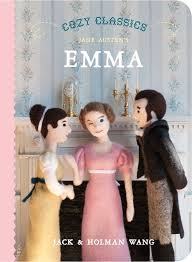 The Cozy Classics board book adaptations of Jane Austen’s novels are handsome and clever (and reasonably priced, too). The new Emma is just as charming as the Cozy Classics Pride and Prejudice (here’s the link to my review of that book), with twelve key words chosen to highlight important moments from the plot, and beautiful felted figures photographed in appropriate settings, often in the natural world.
The Cozy Classics board book adaptations of Jane Austen’s novels are handsome and clever (and reasonably priced, too). The new Emma is just as charming as the Cozy Classics Pride and Prejudice (here’s the link to my review of that book), with twelve key words chosen to highlight important moments from the plot, and beautiful felted figures photographed in appropriate settings, often in the natural world.
The faces of these felted dolls, handmade by brothers Jack and Holman Wang, are simple but expressive. Emma winks at the reader when she introduces Harriet Smith to Mr. Elton (“hello”), and again when Harriet thanks Frank Churchill for rescuing her (“thanks”). She raises her eyebrows when Mr. Elton proposes (“surprise!”), and sets her mouth in a line when she takes Harriet’s hand to pull her away from Robert Martin. And poor Robert Martin! He tilts his head and furrows his brow when Harriet says “goodbye” (or rather, when Emma says goodbye for her).
Poor Miss Bates, too. She clasps her hands and looks down, frowning, when Emma and Frank Churchill laugh and point at her at the Box Hill picnic. She has a furrowed brow that’s even more anxious than Mr. Martin’s. Mr. Knightley frowns and raises his hands when he asks Emma “why?” she has separated Harriet from Robert Martin, but he is positively fierce (okay, as fierce as a small felted doll can be) when he confronts Emma after she makes her infamous joke at Miss Bates’s expense (“angry”). In the earlier confrontation, we see his angry face in profile, and Emma looks away from him, arms crossed. In the Box Hill scene, he faces the reader and Emma with his glare and his frown. “Badly done, indeed!” Emma’s back is to us, and this time her hands appear to be clasped in front of her. The slight angle at which she tilts her head makes it clear she’s not meeting Mr. Knightley’s eyes. It’s astonishing just how much emotion is packed into this tiny book.

why?
Writers sometimes say that composing sentences in 140 characters to post on Twitter is a good way to learn how to be concise. Before I discovered the Cozy Classics books, I would never have imagined that condensing a Jane Austen novel into twelve words could be a useful exercise. I’m often disappointed when two-hour film adaptations leave out crucial scenes from the novels, so it’s surprising to find that a board book adaptation can be so effective at conveying the highlights of an Austen novel. Obviously, there are all kinds of important people, things, and scenes missing from this board book: Mr. Woodhouse, Jane Fairfax, gruel, the piano, and the ball at the Crown, for example. But the Wang brothers’ choice of words tells children a great deal about the story, even if they read on their own, without an adult to fill in more details and names.
I missed the details of Austen’s novel most at the end. The story moves quickly from Mr. Knightley being “angry” to Emma being “sorry” to the two of them being “happy” on the last page. (Harriet and Robert Martin are in the background, happily reunited.) It just isn’t that simple. When Jane Austen shows how Emma responds to Mr. Knightley’s rebuke, we learn about her examining her conscience and discovering that in her attitude toward Miss Bates, “She had been often remiss … ; remiss, perhaps, more in thought than fact; scornful, ungracious.” She judges herself more harshly than Mr. Knightley does, and I’ve long been fascinated by the way she reflects on her mistakes. There’s no doubt that she learns from Mr. Knightley, but she doesn’t learn only from him, and simplifying the plot of Emma will nearly always suggest that his judgement is her rule of right (to paraphrase Henry Crawford’s words to Fanny Price in Mansfield Park). Emma eventually learns to attend to the “better guide” in herself (to paraphrase Fanny’s reply to Henry).
There is of course no substitute for the complexities of an Austen novel. But for very young readers, the Cozy Classics Emma is an excellent place to begin learning about the emotional world of some of Austen’s most memorable characters.
Read more about Jane Austen for Kids here.


January 1, 2014
200 Years of Mansfield Park!
“About thirty years ago, Miss Maria Ward of Huntingdon, with only seven thousand pounds, had the good luck to captivate Sir Thomas Bertram, of Mansfield Park, in the county of Northamptonshire, and to be thereby raised to the rank of a baronet’s lady, with all the comforts and consequences of an handsome house and large income.”
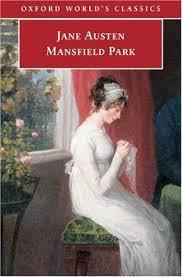 The first sentence of Jane Austen’s Mansfield Park is nowhere near as famous as the first line of Pride and Prejudice. The heroine of Mansfield Park is nowhere near as beloved as Elizabeth Bennet. The novel is rarely chosen as anyone’s favourite Austen novel – I recently heard it described (by a Janeite who shall remain nameless!) as “my 6th favorite Austen.” But even though it doesn’t have the same kind of sparkle as Pride and Prejudice, it’s a complex, fascinating, brilliant book.
The first sentence of Jane Austen’s Mansfield Park is nowhere near as famous as the first line of Pride and Prejudice. The heroine of Mansfield Park is nowhere near as beloved as Elizabeth Bennet. The novel is rarely chosen as anyone’s favourite Austen novel – I recently heard it described (by a Janeite who shall remain nameless!) as “my 6th favorite Austen.” But even though it doesn’t have the same kind of sparkle as Pride and Prejudice, it’s a complex, fascinating, brilliant book.
This year marks the two hundredth anniversary of the publication of Mansfield Park, and I hope you’ll join me in celebrating by reading and discussing the novel here with the wonderful people who’ve agreed to write guest posts on short passages.
The series launches May 9th, on the anniversary of the publication date, with Lyn Bennett’s analysis of the opening paragraph, and it continues through the summer and 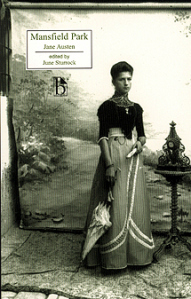 fall with posts by many excellent writers. Here are the ones confirmed so far: Elaine Bander, Deborah Barnum, Lorrie Clark, Natasha Duquette, Susan Allen Ford, Margaret Horwitz, Theresa Kenney, Ryder Kessler, Hugh Kindred, Cheryl Kinney, Sara Malton, David Monaghan, Laurel Ann Nattress, Amy Patterson, Mary C. M. Phillips, Maggie Sullivan, Judith Thompson, and Sarah Woodberry. Sheila Johnson Kindred will write about the concluding paragraphs towards the end of the year.
fall with posts by many excellent writers. Here are the ones confirmed so far: Elaine Bander, Deborah Barnum, Lorrie Clark, Natasha Duquette, Susan Allen Ford, Margaret Horwitz, Theresa Kenney, Ryder Kessler, Hugh Kindred, Cheryl Kinney, Sara Malton, David Monaghan, Laurel Ann Nattress, Amy Patterson, Mary C. M. Phillips, Maggie Sullivan, Judith Thompson, and Sarah Woodberry. Sheila Johnson Kindred will write about the concluding paragraphs towards the end of the year.
I can’t wait to read their posts and share them with you as we pay tribute to the third of the four novels Austen published in her lifetime. I love Pride and Prejudice as much as any devoted Janeite, but Mansfield Park is a close second for me. I’m happy to be celebrating with all of you online through the year, and with many of you in person at the JASNA AGM in Montreal in October.
Happy New Year, and Happy 200th Anniversary to Mansfield Park!


December 25, 2013
Christmas Company and Celebrations
I sincerely hope your Christmas … may abound in the gaieties which that season generally brings.
- Pride and Prejudice
Yes, I know I’m quoting Caroline Bingley here, just as the Bank of England quotes her saying, “I declare there is no enjoyment like reading” on the mock up of the new £10 note. (I recommend John Mullan’s analysis of “Why that Jane Austen quotation on the new £10 note is a major blunder” and Janine Barchas’s post “Jane Austen on the Tenner — great idea, bad execution.”) No matter how hard you search the texts of Austen’s novels and letters, it can be a challenge to find quotations that fit special occasions such as holidays and weddings.
My wishes really are sincere, however. I hope you all have a wonderful time over the holidays. May you all enjoy good food (syllabub, perhaps?), good books, and good company – or, if you’re very fortunate (and I hope you are), the best company: “the company of clever, well-informed people, who have a great deal of conversation” (Persuasion). There – that’s a Jane Austen quotation that fits the occasion, and it’s Anne Elliot this time, instead of Miss Bingley.
Merry Christmas, and I’ll see you in the New Year. Let’s celebrate 200 years of Mansfield Park!


December 16, 2013
Happy Birthday to Jane Austen!
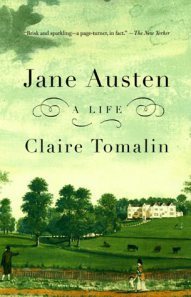 Jane Austen was born 238 years ago today, on December 16, 1775. Claire Tomalin imagines what must have been happening at Steventon in the first days after the birth: “Inside the parsonage, Mrs. Austen lay upstairs in the four-poster, warmly bundled under her feather-beds, the baby in her cradle beside her, while someone else—very likely her sister-in-law Philadelphia Hancock—supervised the household, all the cleaning and cooking necessary where there were many small children, together with the extra washing for the newly delivered mother.” She says Mrs. Austen wouldn’t have left her bed for at least two weeks, and wouldn’t have left the house for at least a month. It was a cold, hard winter.
Jane Austen was born 238 years ago today, on December 16, 1775. Claire Tomalin imagines what must have been happening at Steventon in the first days after the birth: “Inside the parsonage, Mrs. Austen lay upstairs in the four-poster, warmly bundled under her feather-beds, the baby in her cradle beside her, while someone else—very likely her sister-in-law Philadelphia Hancock—supervised the household, all the cleaning and cooking necessary where there were many small children, together with the extra washing for the newly delivered mother.” She says Mrs. Austen wouldn’t have left her bed for at least two weeks, and wouldn’t have left the house for at least a month. It was a cold, hard winter.
On December 7th, JASNA Nova Scotia enjoyed a lovely celebration of Austen’s birthday at The Cellar Bar and Grill in Halifax, with a record turnout of seventeen people. Christina told us about tours and talks at the 2013 JASNA AGM in Minneapolis, and Hugh gave an eloquent toast to Jane Austen, quoting a passage from a letter to Cassandra in November 1798 in which she talks, briefly, about her own feelings. Austen’s reflections, he said, “are full of her customary ironic humour, only in this instance it’s directed towards herself.”

The Cellar Bar and Grill
In the letter, she’s writing about Tom Lefroy (the “Irish friend” with whom she had danced and flirted in the past) and she says, “I was too proud to make any enquiries”  about him. “It will all go on exceedingly well, and decline away in a very reasonable manner. There seems no likelihood of his coming into Hampshire this Christmas, and it is therefore most probable that our indifference will soon be mutual, unless his regard, which appeared to spring from knowing nothing of me at first, is best supported by never seeing me.”
about him. “It will all go on exceedingly well, and decline away in a very reasonable manner. There seems no likelihood of his coming into Hampshire this Christmas, and it is therefore most probable that our indifference will soon be mutual, unless his regard, which appeared to spring from knowing nothing of me at first, is best supported by never seeing me.”
Hugh wonders what she thought of Tom Lefroy in his absence. “Was she disappointed or dissembling? Was her existence a life less for a love lost, or a literary life released by a love let go?” What do you think of this passage, dear readers? Does her humour conceal disappointment, or is she ready for “mutual indifference”? Can you think of other passages in the letters where she makes reference to her feelings?
The new issue of Persuasions On-Line is published today, including papers from the AGM in Minneapolis. This year’s celebration of 200 years of Pride and Prejudice continues. Pretty soon, however, it will be the Year of Fanny Price – 200 years since the publication of Mansfield Park – and JASNA members can look forward to the 2014 AGM: “Mansfield Park in Montréal: Contexts, Conventions & Controversies.”
I’m working on an exciting project that will celebrate Mansfield Park here on my blog. As with the 200th anniversary of Pride and Prejudice and the 100th anniversary of The Custom of the Country, I’m planning a series of posts that focus on the novel—but this  time, you’ll get to hear from several different writers talking about Mansfield Park. Please stay tuned for more information about the contributors to this new series!
time, you’ll get to hear from several different writers talking about Mansfield Park. Please stay tuned for more information about the contributors to this new series!
Quotations from the letters are from the fourth edition of Jane Austen’s Letters, ed. Deirdre Le Faye (Oxford University Press, 2011). The passage about Jane Austen’s birth is from Jane Austen: A Life, by Claire Tomalin (Vintage, 1999).


December 15, 2013
Run or walk the Sole Sisters 5K with JASNA Nova Scotia!
Come out and run or walk the Sole Sisters 5K in June with the women of JASNA Nova Scotia! 2014 is the third year for this fun event, organized by the inspiring Stacy Juckett Chesnutt. Leave your watch at home, because no one’s keeping track of times at this race. Sole Sisters celebrates “the strength of female runners and the lifelong friendships developed on and off the running roads.” We hope the men of JASNA NS will consider cheering us on.
Run or walk with your friends, stop for water (and chocolate!) along the way, and support the Sole Sisters charity partners, including Girls Gone Gazelle, a not-for-profit, all-girls running club for pre-teens, whose slogan is “I don’t chase boys, I pass them!”
Please join us Saturday, June 7, 2014 in Dartmouth, NS. Click here to register — and “make haste,” as Mrs. Bennet would say. The event sells out quickly.
“Run mad as often as you chuse; but do not faint.” - Jane Austen, “Love and Freindship”



